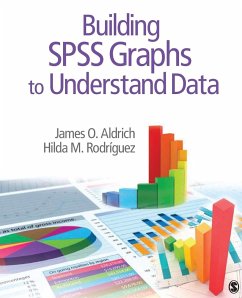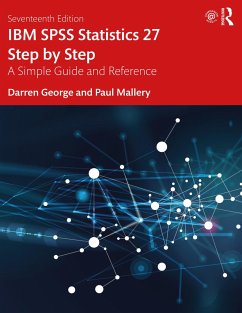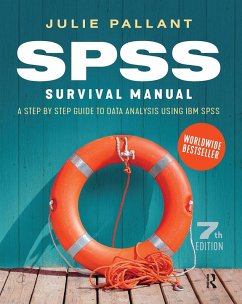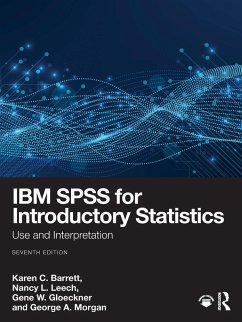
An EasyGuide to Research Design & SPSS
Versandkostenfrei!
Versandfertig in 2-4 Wochen

PAYBACK Punkte
42 °P sammeln!




Clear, concise and conversational, this second edition includes step-by-step instructions for working with data in SPSSÂ and covers the most common designs and analyses that students need to know to test a hypothesis and successfully complete their research project.
Dieser Artikel kann nur an eine deutsche Lieferadresse ausgeliefert werden.
Beth M. Schwartz is the Provost and Professor of Psychology at Endicott College. Previously she served as Vice President for Academic Affairs and Provost and Professor of Psychology at Heidelberg University, in Tiffin, Ohio. Dr. Schwartz started her career on the faculty at Randolph College (founded as Randolph-Macon Woman¿s College) in Lynchburg, VA, where she served for 24 years. At Randolph she was the William E. and Catherine Ehrman Thoresen '23 Professor of Psychology and Assistant Dean of the College. She received a BA at Colby College (Maine) and a PhD in cognitive psychology at the State University of New York at Buffalo. Her scholarship focuses on the scholarship of teaching and learning/pedagogical research, in particular the issues surrounding academic integrity and honor systems. In addition to numerous professional presentations at conferences, she has published many book chapters and articles in a variety of scholarly journals, including the Journal of Higher Education, Ethics and Behavior, Law and Human Behavior, and Applied Developmental Science. She has also edited and coauthored books, including Child Abuse: A Global View (Schwartz, McCauley, & Epstein, 2001), Optimizing Teaching and Learning (Gurung & Schwartz, 2012), and Evidence-Based Teaching for Higher Education (Schwartz & Gurung, 2012). She is a member of the American Psychological Association (APA) and the American Psychological Society and is a Fellow of Division 2 of APA (Society for the Teaching of Psychology). She was an award-winning teacher at Randolph College, where she taught Introduction to Psychology, Research Methods, Cognitive Psychology, and the capstone course. She received the Award for Outstanding Teaching and Mentoring from the American Psych-Law Society, the Gillie A. Larew Award for Distinguished Teaching at Randolph College, the Katherine Graves Davidson Excellence in Scholarship Award from Randolph College, and the Distinguished Faculty Achievement Certificate from the State Council of Higher Education for Virginia.
Produktdetails
- EasyGuide Series
- Verlag: SAGE Publications Inc
- 2 Revised edition
- Seitenzahl: 312
- Erscheinungstermin: 15. Juni 2018
- Englisch
- Abmessung: 177mm x 236mm x 16mm
- Gewicht: 392g
- ISBN-13: 9781506385488
- ISBN-10: 1506385486
- Artikelnr.: 50009129
Herstellerkennzeichnung
Libri GmbH
Europaallee 1
36244 Bad Hersfeld
gpsr@libri.de
Für dieses Produkt wurde noch keine Bewertung abgegeben. Wir würden uns sehr freuen, wenn du die erste Bewertung schreibst!
Eine Bewertung schreiben
Eine Bewertung schreiben
Andere Kunden interessierten sich für











